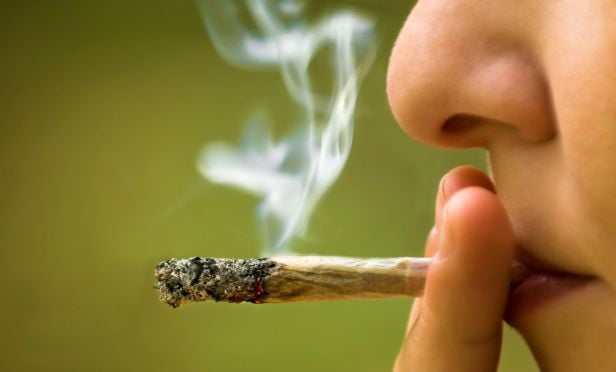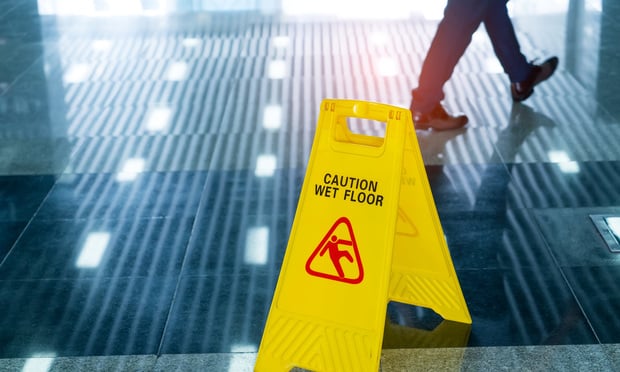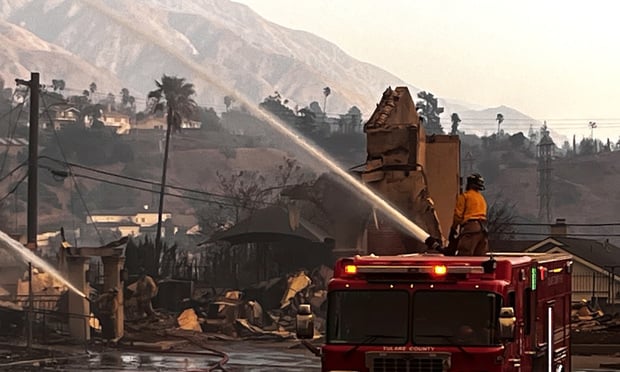 Although the conditions for prescribing medical marijuana differ from state to state, there are many similarities. (Photo: Shutterstock)
Although the conditions for prescribing medical marijuana differ from state to state, there are many similarities. (Photo: Shutterstock)
The industry is in a haze, and it’s from marijuana — legalized medical marijuana. So many questions and not enough answers when it comes to established claims guidelines for reimbursement:
- Is cannabis falling into the abyss of the property and casualty claims payment systems?
- What do claims professionals do when they encounter a medical bill for cannabis?
- Why are there are no valid codes for submission for payment in the Current Procedural Terminology (CPT), Healthcare Common Procedural Coding System (HCPCS) or National Drug Code (NDC) for medical marijuana?
There actually is an answer to the last question because the Food and Drug Administration (FDA) still classifies medical marijuana as a Schedule I drug. The FDA has not approved marijuana as a safe and effective drug for any indication (FDA, 2017). Its classification as a Schedule I drug under the Controlled Substances Act of 1970 indicates that marijuana has a high potential for abuse, does not currently have an accepted medical use and has a lack of accepted safety for use under medical supervision. Other Schedule I drugs include heroin and hallucinogens like LSD.
Legalization in the U.S.
At the state level, there are currently 29 states plus the District of Columbia that have legalized medical marijuana (ProCon.Org, 2017). They are:
- Alaska*
- Arizona
- Arkansas
- California*
- Colorado*
- Connecticut
- Delaware
- Florida
- Hawaii
- Illinois
- Maine*
- Maryland
- Massachusetts*
- Michigan
- Minnesota
- Montana
- Nevada
- New Hampshire
- New Jersey
- New Mexico
- New York
- North Dakota
- Ohio
- Oregon*
- Pennsylvania
- Rhode Island
- Vermont
- Washington*
- West Virginia
- Washington, D.C.
Of these states, seven have also legalized marijuana for recreational use in addition to medical marijuana.
Related: Workplace safety and weed at work

Marijuana has found to be an effective treatment for a wide variety of medical conditions. (Photo: Shutterstock)
Legalized marijuana and claims
In states where medical marijuana has been legalized, they specify qualifying conditions for which marijuana can be prescribed. Here in the property & casualty (P&C) industry, we are concerned with those conditions related to workers’ compensation and auto accidents. Although the conditions for prescribing medical marijuana differ from state to state, there are many similarities.
Related: Legalizing recreational marijuana linked to increased car crashes, insurance study finds
Conditions such as pain, spinal cord injury, traumatic brain injuries, muscle spasms, post-traumatic stress syndrome and more can be seen in accident injury cases. Some states even have “other chronic or persistent medical conditions” approved for prescription, which can lead to seeing claims where the doctor is prescribing for non-specific diagnoses.
Insurers should be aware that non-specific diagnoses codes can appear on submitted medical bills using the International Classification of Diseases – 10th Revision, Clinical Modification (ICD-10-CM), using the following example codes:
M79.604 – Pain in right lower limb, not otherwise specified.
G89.21 – Chronic pain due to trauma.
M54.5 – Low back pain.
When pain is the only diagnosis on the bill (claim), it is probably best to request additional codes to isolate the injury. For the ICD-10-CM, G89 codes may be used in conjunction with codes from other categories and chapters to provide more detail about acute or chronic pain and neoplasmrelated pain, unless otherwise indicated in other guidelines.
Legalized marijuana and workplace safety concerns
A major concern with patients using medical marijuana is the effect it may have on them while at work and operating equipment like motorized vehicles. Driving under the influence (DUI) laws for marijuana are similar to that of using alcohol.
Until recently, it was more difficult for law enforcement to test for marijuana intoxication. However, some states, like California, have recently unveiled a newer detection system that uses a mobile saliva screening device. In addition to testing for marijuana this device will also test for cocaine, amphetamines and prescription narcotics.
According to the National Institute on Drug Abuse, after alcohol, marijuana is the drug most often found in the blood of drivers involved in crashes. To detect marijuana in drivers, the tests measure the level of delta-9- tetrahydrocannabinol (THC), marijuana’s mind-altering ingredient, in the blood. But the role that marijuana plays in crashes is often unclear (www.drugabuse.gov, 2016).
With all the possibilities of a driver or worker either being prescribed or using recreational marijuana, not only are future accidents highly probable, but so are the additional prescriptions being prescribed for injuries they receive. Today, the majority of casualty claim payers do not cover medical marijuana prescriptions. However, we are seeing a number of instances where judges have forced workers’ compensation payers to reimburse claimants. These cases are few and have occurred in states like in New Jersey, Maine, Connecticut, Minnesota and New Mexico.

Coding the legalized marijuana claim
If a payer received a claim to cover medical marijuana, how would they recognize the drug without any ability to submit it using appropriate codes?
Since the FDA has not approved marijuana, there are no codes or standardized nomenclatures available for communicating the prescribing of legalized marijuana from providers to payers. What we see in claims is documented evidence of medical marijuana being used by claimants and creative use of the nomenclatures currently used for reimbursement.
Some of the codes and situations being billed that include medical marijuana are:
- CPT code 99070 (American Medical Association) – Supplies and materials provided by the physician or other qualified health care professional over and above those usually included with the office visit or other services rendered (list drugs, trays, supplies or materials provided).
- When CPT Code 99070 is submitted, the provider must submit in writing if necessary the listing of drugs, trays, supplies or materials provided.
- It is difficult to make the distinction unless the documentation is reviewed. It would be difficult to review every supply code (99070) as these are prevalent among claims.
- Evaluation and management codes – Bundling the cost of the medical marijuana into the cost of the office or visit code is more difficult to ascertain as these codes are used to legitimately report the encounter.
- Any drugs would need to be identified in the documentation of the visit, which is usually where we will encounter a prescription message from the provider.
- Using the ICD-10-CM codes as a guide and the potential pricing of the encounter may lead to clues in outlining where to look for these cases.
- Unclassified drug codes (HCPCS) –
- Many of the following codes do not make complete sense to use as the descriptions do not match medical marijuana. However, these are the code sets used when documentation was obtained that represented medical marijuana billing.
- J3490 – Unclassified drugs
- J7599 – Immunosuppressive drug, not otherwise classified
- J7699 – NOC drugs, inhalation solution administered through DME
- J7799 – NOC drugs, other than inhalation drugs, administered through DME
- J8499 – Prescription drug, oral, non-chemotherapeutic, NOS
- J8999 – Prescription drug oral, chemotherapeutic, NOS
- J9999 – Not otherwise classified, antineoplastic drugs
One thing is clear: raising this topic has shown that the current state of claims payments for medical marijuana has yet to be defined. So what is the answer? It’s actually a multi-step process that needs to take place to get to any kind of established protocol.
First, a main step in moving forward with acceptance would be obtaining FDA approval and movement to a Schedule II or III drug. Once acceptance is given at this level, classifications that accurately identify the drug must be established. And finally, once marijuana is classified, the difficult work of protocols and acceptance of this treatment in workers’ compensation and auto claims begins, and the haze will end.
Related: Cannabis compliance software eases business insurance snags
Michele Hibbert-Iacobacci, CCSP, OHCC, ([email protected]) is vice president of Information and Support for Mitchell Casualty Solutions.
Want to continue reading?
Become a Free PropertyCasualty360 Digital Reader
Your access to unlimited PropertyCasualty360 content isn’t changing.
Once you are an ALM digital member, you’ll receive:
- Breaking insurance news and analysis, on-site and via our newsletters and custom alerts
- Weekly Insurance Speak podcast featuring exclusive interviews with industry leaders
- Educational webcasts, white papers, and ebooks from industry thought leaders
- Critical converage of the employee benefits and financial advisory markets on our other ALM sites, BenefitsPRO and ThinkAdvisor
Already have an account? Sign In Now
© 2025 ALM Global, LLC, All Rights Reserved. Request academic re-use from www.copyright.com. All other uses, submit a request to [email protected]. For more information visit Asset & Logo Licensing.








